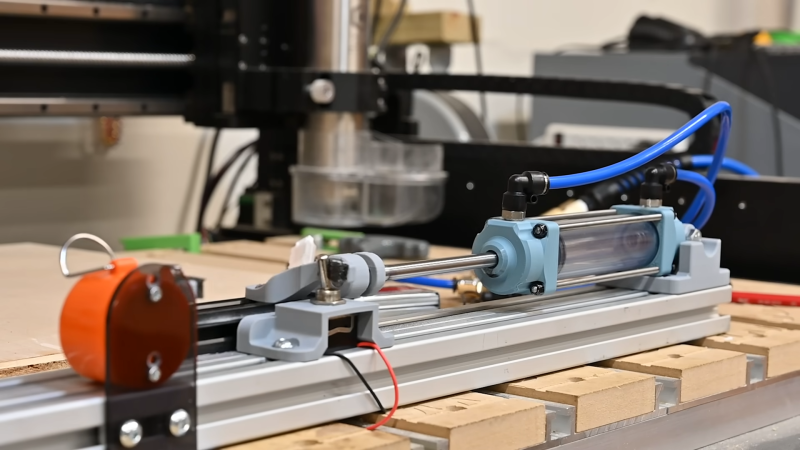Pneumatic actuators can be powerful and fast, making them very useful for all kinds of mechanical jobs. [Michael Rechtin] decided that while he could buy them off-the-shelf, he preferred to see if he could make his own via 3D printing. Despite the challenges, he succeeded!
Part of his success is because he knew when to take advantage of the strengths of 3D printed parts, and where they wouldn’t perform so well. To that end, the main body of the cylinder is actually a piece of PVC pipe. That’s because manufactured PVC pipe is far smoother and more regular than what you could reasonably achieve with a most 3D printers. The end caps, however, were printed and tapped to take standard air fittings. The piston was printed too, fitted with a steel cylinder rod and O-rings for sealing.
The double-acting cylinder performed remarkably well in testing, easily skewering an orange. The initial version did leak a touch, but later revisions performed better. Springs were also fitted for damping hits at either end which improved longevity, with a test rig racking up over 10,000 cycles without failure.
We love a design that is both easy to build at home and capable of great performance. We’ve featured some neat open-source pneumatic builds before, too.
















Wouldn’t the better way have been to use the circular saw that was pulled out of the cupboard first?
That’s the joke
There’s also the fact that sawing machines that are like this but use a motor already exist.
Apart from that I guess it’s a reasonable design and the guy puts some nice work into the actuator.
Next step is to turn a pneumatic auto sucker (love toys) to a wood stick sander. With putting some emery cloth inlay in it. I am sure you can get a really clean polished surface with it. Maybe it works also as a vegetable peeler.
But i stay with my potatoe gun french fries maker. You can taste the velocity.
One of the oldest articles of hackaday is about our famous scientific woodworker matthias wandel, he build a automated handsaw a decade ago.